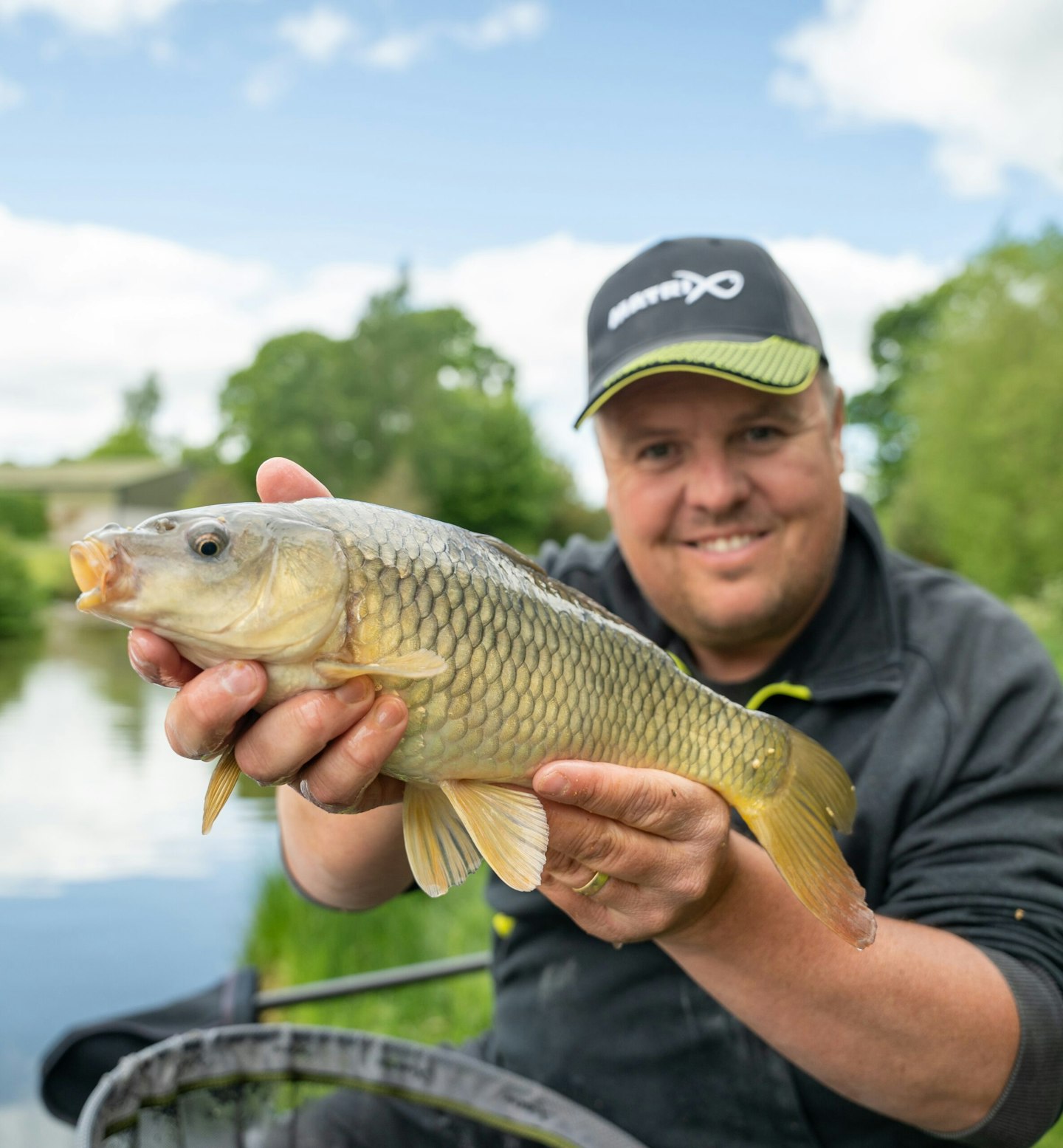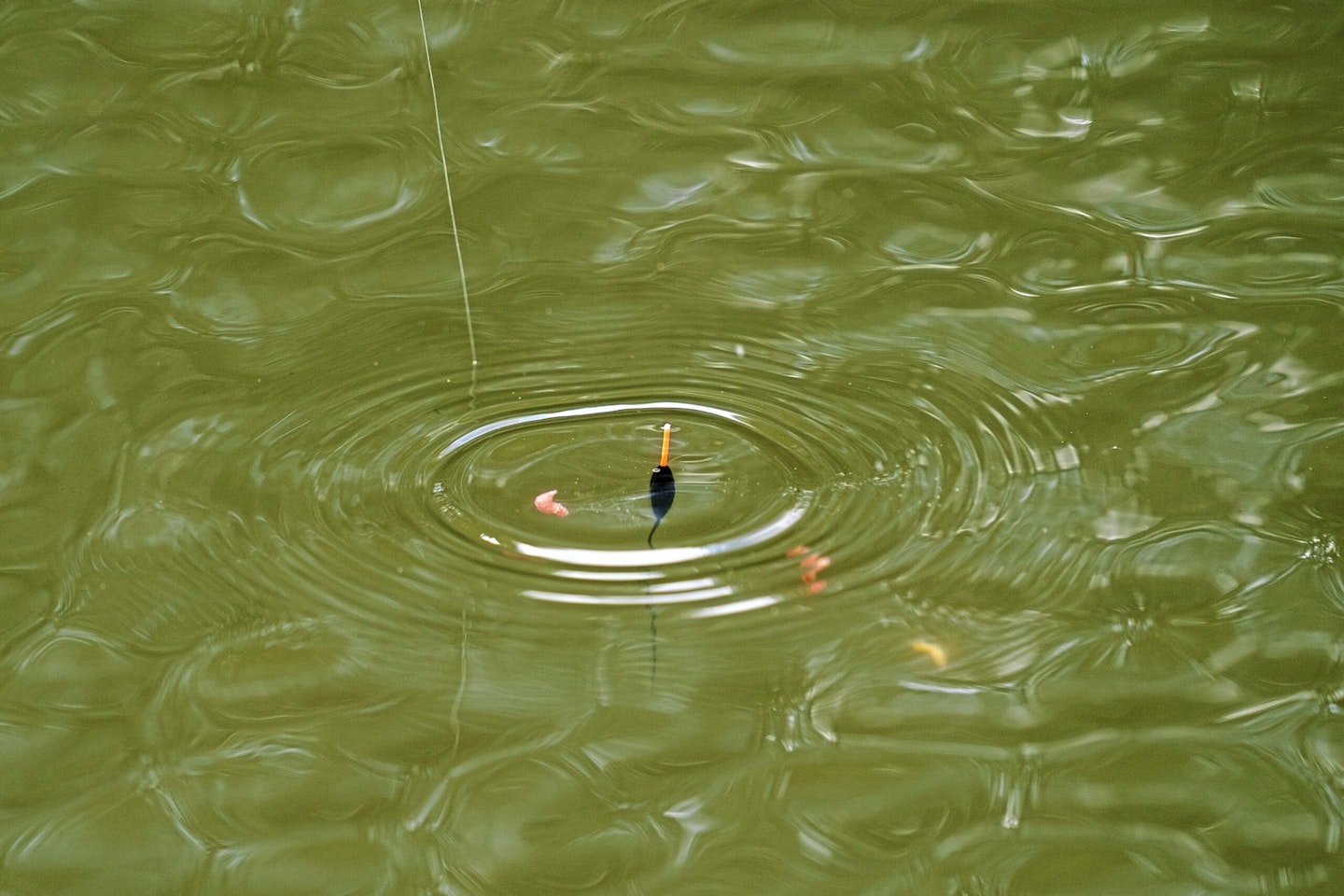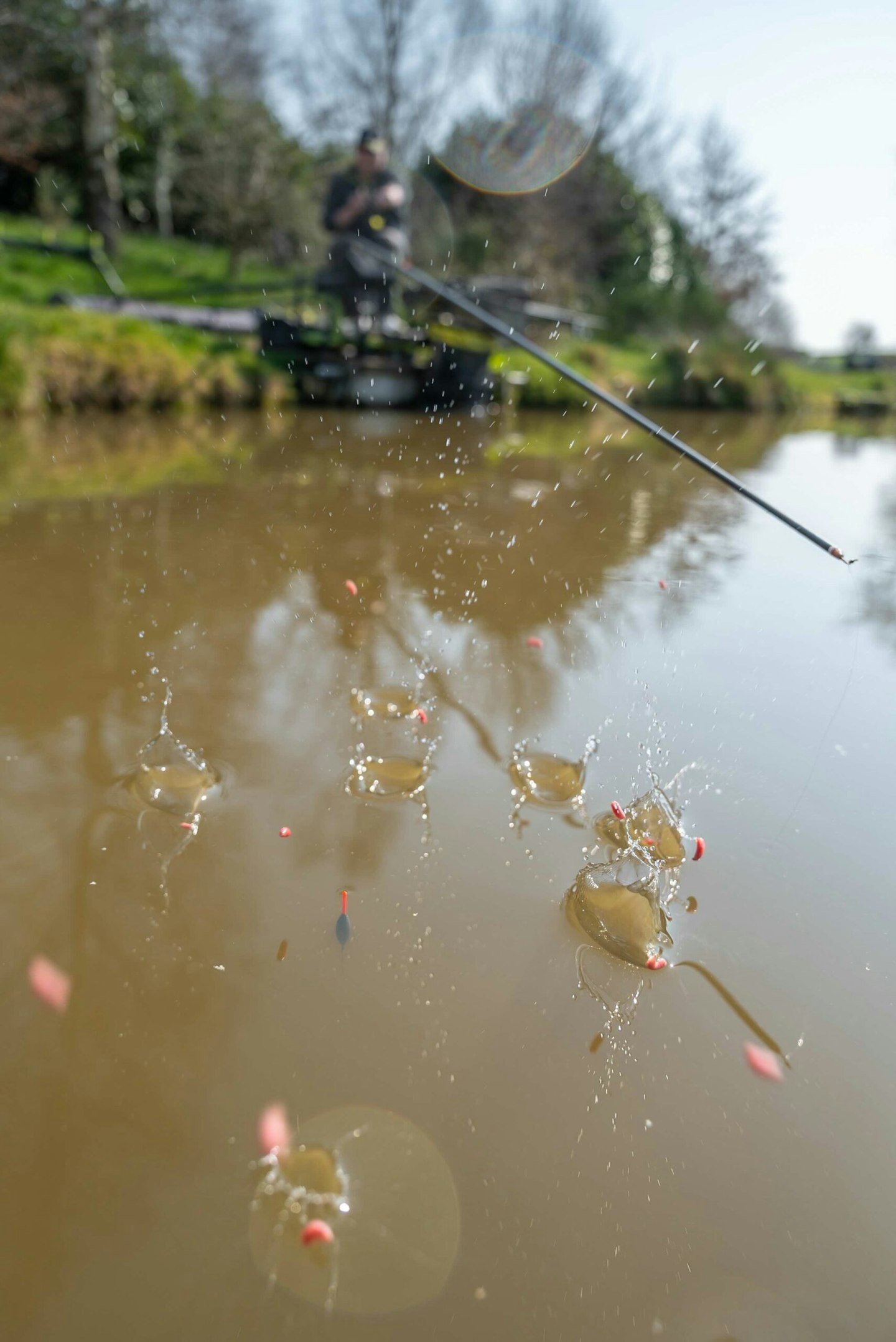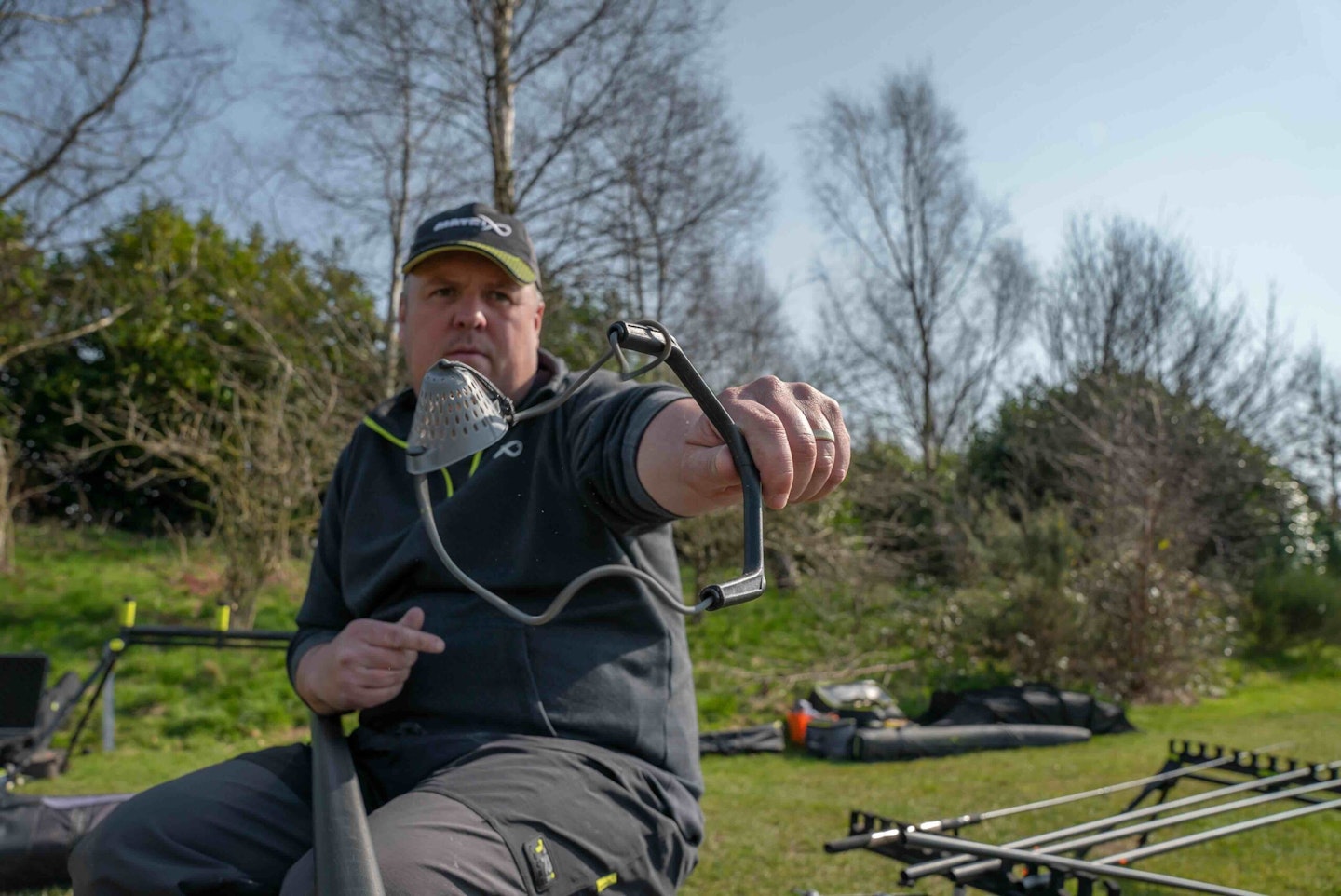High temperatures mean that carp and F1s are happy to come off bottom and cruise around close to the surface and whether you want to dob, slap, mug or lift and drop, going shallow is the most reliable way to get bites.
But it’s not a simple case of shipping the pole out, feeding and laying the rig in! Shallow fishing is an area where so many anglers fall down, but the answers to their problems are simple. Here are the three main problems I saw during coaching sessions, and how I fixed them...
MAKE SURE YOU'RE USING THE BEST FISHING POLE BY CHECKING OUT OUR BUYER'S GUIDE.

Keep a tight line
Too many anglers allow the line between pole-tip and float to hang loose, often on the surface of the water. This means that when they get a bite, they have to take up this slack and the chance of hooking a fish is gone.
By keeping the line tight, you’re always direct to any fish, so you’ll only need to lift the pole slightly to hook it and, at best, the fish should hook itself against the pole-tip. A short ‘lash’ or length of line between float and pole is a must which, depending on fishery rules, could be 12ins – although I normally go for 2ft.
So, how do you keep the line tight? It depends on weather conditions and whether you’re after carp or F1s. Where conditions are concerned, it’s all to do with the wind, so in flat-calm weather it’s a case of holding the line tight by having the pole off the water and direct to the float. When it’s windy, this becomes more difficult, and backshotting can help.
I’m not a fan of backshots for carp, but I use them for F1s. Typically, it involves one or two No8 shot set halfway up the line. It’s important not to have the line hanging in an L-shaped dog leg, everything still needs to be in a tight and straight line. You’ll know you’ve got it right when a fish pulls the elastic out of the pole!
USING ONE OF THE BEST SEATBOXES WILL HELP YOU SIT COMFORTABLY WHEN FISHING THE POLE.

Watch the shadow
This is something we don’t really think about, reasoning that the fish are spooked by the pole itself, but I think the shadow it casts makes more of a difference. That’s why I don’t use grey or white-coloured top kits, because I don’t think they help.
Hold the pole right on top of the float and the shadow will be very close to the rig, which makes the fish more wary. There’s no getting away from it, a shadow will always be there, so the trick is to keep it as far away from the fish as possible.
I’ll do this by fishing on the other side of the shadow, so, for example, if it’s being cast to the right of the swim, fish to the left. If it’s directly overhead, fish to the left or right. That’s where having a longer line between pole and float helps, creating the distance needed but still allowing you to keep that all-important tight line.

Feeding: noise-not volume
The temptation when fishing shallow is to begin raining feed in from the start. I’ve noticed that on a lot of fisheries this summer, however, the carp aren’t that keen on swimming in amid the feed and it’s almost as though they don’t want to eat. That said, they’ll still be curious and will come to noise, so that’s what you need to do to begin with.
Feed nothing and just slap or lay the rig on the surface to make a couple of splashes from the bait and float and see what happens. I’d be confident that this will catch those carp that aren’t feeding simply by making a bit of noise.
Sound is more important than volume of feed. After this, you can then pick the catapult up and fire in a bit of bait, and I do mean only a bit, perhaps two or three 6mm or 4mm pellets and begin to build the swim up. I believe that feed for carp is an attention-grabbing thing and nothing more.
Things are different for F1s, because these are hungry and aggressive fish and the opposite needs to happen. The aim is always have bait falling through the water, so in go 10 to 20 maggots or casters (I’m not a fan of pellets for F1s in summer) every 30 seconds at the start. Once the fish arrive, their reaction will allow you to make adjustments, be that feeding more to catch quicker or taking the foot off the gas a little with less bait. I’d also look at how the feed is landing on the water, aiming for a very tight, accurate grouping for F1s, but a wider spread for carp.
CATCHING LOADS OF FISH AFTER THIS ADVICE? CHECK OUT OUR BUYER'S GUIDE TO THE BEST LANDING NETS.

This page is a free example of the amazing content Angling Times Members get every single week. Becoming an Angling Times Member gives you access to award-winning magazine content, member rewards, our back issue archives, bonus content and more! Join our fishing community and find out more today!
